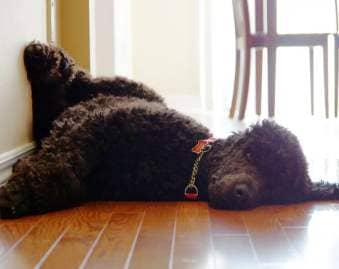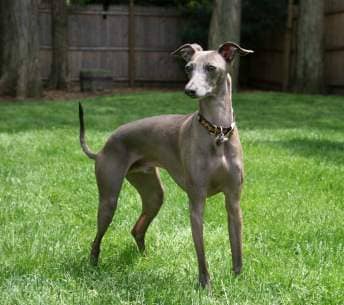Discover the Perfect Dog Breed for Your Retirement Years
Welcoming a new furry friend into your life is an exciting and rewarding experience, particularly as you transition into retirement. With newfound free time and the desire for companionship, many retirees look forward to the prospect of adopting a canine companion to share their golden years. Choosing the right breed is essential for creating a lasting bond and ensuring both you and your new pet enjoy a happy, healthy life together. However, there’s more to consider than just breed characteristics; factors such as activity level, living space, and temperament compatibility play a crucial role in finding the perfect match for your lifestyle.
In addition to breed selection, it’s important to be aware of the potential challenges and responsibilities that come with pet ownership, including training, grooming, and healthcare. Being prepared for these aspects of dog ownership can ensure a smoother transition and help you create a nurturing environment for your new companion. Furthermore, understanding how to avoid unethical breeding practices and scams is essential to ensure that your new puppy comes from a responsible source, setting the foundation for a lifetime of happiness and good health.
This comprehensive guide will provide you with valuable insights into popular dog breeds for retirees, taking into account their temperament, grooming needs, and training requirements. We will also discuss essential factors to consider when choosing a dog, such as activity level, space requirements, and cost, as well as tips for avoiding puppy farms and scams. By carefully considering all these aspects, you can make an informed decision that will lead to a fulfilling companionship, enriching your retirement years with the love and joy that only a canine companion can provide.
The Affectionate Cavalier King Charles Spaniel

The Cavalier King Charles Spaniel is a small, affectionate, and friendly breed. They are great for retirees because they enjoy cuddling on the couch as much as going for a gentle walk. Cavaliers are easy to train, making them suitable for first-time dog owners. Their low energy levels mean they require less exercise than many other breeds, which is ideal for those with a more relaxed lifestyle.
The Adaptable Poodle

Poodles come in three sizes: standard, miniature, and toy, allowing you to choose the perfect size for your living situation. Known for their intelligence and adaptability, poodles can thrive in various environments, making them a great fit for retirees. They are also hypoallergenic, which is ideal for those with allergies. Regular grooming is necessary, but their low-shedding coats help maintain a clean home.
The Loyal and Friendly Bichon Frise

The Bichon Frise is a small, cheerful dog that loves being around people. They are an excellent companion for retirees because they are low-maintenance and require only moderate exercise. This breed is also hypoallergenic, making it a great choice for those with allergies. Their friendly nature means they get along well with other pets and people of all ages.
The Easygoing Greyhound

Contrary to popular belief, Greyhounds are not high-energy dogs. They are known as “45-mph couch potatoes” because they enjoy lounging around as much as they love to sprint. This breed is ideal for retirees as they require minimal grooming, are gentle with children, and can adapt well to both apartment living and homes with yards. Plus, adopting a retired racing Greyhound can provide a loving home to a dog in need.
The Gentle Giant: Newfoundland

Newfoundlands are large, gentle dogs known for their loyalty and calm demeanor. They make excellent companions for retirees due to their affectionate nature and ability to adapt to various living situations. Though they require regular grooming, Newfoundlands are generally low-energy dogs that enjoy leisurely walks and relaxing with their owners.
The Loving and Gentle Maltese

The Maltese is a small, affectionate breed that makes an excellent companion for retirees. They are low-shedding and hypoallergenic, which is ideal for those with allergies. Maltese dogs are known for their loving nature and adaptability, making them suitable for various living situations. They do require regular grooming, but their exercise needs are relatively low, making them a great fit for a relaxed lifestyle.
The Sociable and Charming French Bulldog

French Bulldogs are an ideal choice for retirees seeking a low-energy, easygoing companion. Their small size makes them suitable for apartment living, and they are known for their charming personalities. Frenchies require minimal grooming and are generally low-maintenance. They thrive on human interaction and love to be close to their owners, making them a delightful addition to a retiree’s life.
The Intelligent and Affectionate Shih Tzu

Shih Tzus are small, friendly dogs that make wonderful companions for retirees. They are known for their affectionate nature and adaptability, which makes them suitable for different living environments. Shih Tzus are low-shedding, but they do require regular grooming to maintain their coat. Their exercise needs are moderate, and they are generally easy to train, making them an excellent choice for first-time dog owners.
The Calm and Loyal Labrador Retriever

Labrador Retrievers are a popular choice for families, but they can also make fantastic companions for retirees. Known for their loyal, gentle nature, Labs are easy to train and enjoy being around people. They require moderate exercise to stay healthy and happy, making them a great choice for active retirees who enjoy daily walks. Their short coat is low-maintenance, requiring only occasional grooming.
The Good-Natured and Low-Maintenance Beagle

Beagles are a friendly, easygoing breed that can be a great choice for retirees. They have a good-natured temperament, making them excellent companions. Beagles are low-maintenance, with minimal grooming requirements and moderate exercise needs. They enjoy daily walks and are known for their adaptability, making them suitable for various living situations. Beagles are also a great choice for retirees who enjoy outdoor activities and spending time with family.
Summary of Ideal Dog Breeds for Retirees
Retirees have a variety of excellent dog breeds to choose from, depending on their lifestyle, living situation, and personal preferences. Some popular breeds for retirees include the Cavalier King Charles Spaniel, Poodle, Bichon Frise, Greyhound, Newfoundland, Maltese, French Bulldog, Shih Tzu, Labrador Retriever, and Beagle. These breeds typically share traits such as being low-maintenance, friendly, adaptable, and having moderate exercise needs. Choosing the right breed will ensure a strong bond and lasting companionship throughout your golden years.

Tips for Training Dogs from a Puppy Age
Training your dog from a young age is essential for establishing good behavior and a strong relationship. Here are some tips to help you train your puppy effectively:
- Start Early: Begin training as soon as you bring your puppy home, typically around 8-10 weeks old. Early training helps establish good habits and prevents bad behavior from developing.
- Consistency is Key: Be consistent with your commands and expectations. Ensure that all family members use the same words and signals to avoid confusing the puppy.
- Positive Reinforcement: Use positive reinforcement, such as treats, praise, and playtime, to reward your puppy for good behavior. This method is more effective and creates a stronger bond between you and your dog than punishment-based training.
- Socialization: Expose your puppy to various environments, people, and other animals to help them become well-adjusted and confident. Socialization is crucial during the first 3-4 months of a puppy’s life.
- Patience and Persistence: Training a puppy takes time, and progress may be slow. Be patient, persistent, and maintain a positive attitude to help your puppy learn.
- Short and Frequent Training Sessions: Keep training sessions short (10-15 minutes) and frequent (2-3 times a day) to maintain your puppy’s attention and prevent them from becoming overwhelmed.
- Enroll in Puppy Classes: Puppy classes can provide a structured environment for learning and socialization, as well as guidance from experienced trainers. Look for classes in your area that focus on positive reinforcement methods.
By following these tips and dedicating time and effort to training, you’ll lay the foundation for a well-behaved, happy, and loving companion for your retirement years.

See Also Channel Your Dog’s Energy & Master Recall: A Fun and Engaging Guide to Retrieving and Whistle Recall
Grooming Tips and Pros and Cons for Each Breed
Proper grooming is essential for maintaining the health and happiness of your dog. Here are some grooming tips, as well as the pros and cons of grooming each breed mentioned in the article.
Cavalier King Charles Spaniel
Pros: Cavaliers have a silky, medium-length coat that requires moderate grooming. Brushing 2-3 times a week helps prevent matting and removes loose hair.
Cons: They are prone to ear infections, so regular ear cleaning is necessary. Cavaliers may also need occasional trims around the face, feet, and tail.
Poodle
Pros: Poodles are hypoallergenic and low-shedding, making them ideal for allergy sufferers. Brushing their coat several times a week helps prevent matting.
Cons: Their curly coats require regular grooming, including professional clipping every 4-6 weeks to maintain their signature style.
Bichon Frise
Pros: Bichons are hypoallergenic and low-shedding, ideal for those with allergies. Brushing their coat several times a week helps prevent matting.
Cons: Bichons require regular grooming, including professional trims every 4-6 weeks to maintain their appearance. They also need frequent ear cleaning and occasional teeth brushing.
Greyhound
Pros: Greyhounds have a short, low-maintenance coat that requires minimal grooming. A weekly brushing with a soft-bristle brush or rubber grooming mitt is usually sufficient.
Cons: They are prone to dental issues, so regular teeth brushing is necessary. Additionally, their thin skin and short coat offer limited protection against the cold, so they may need a coat during winter months.
Newfoundland
Pros: Newfoundlands have a thick, water-resistant coat that provides excellent insulation and protection from the elements.
Cons: Their long, dense coat requires regular brushing, at least 2-3 times a week, to prevent matting and reduce shedding. They also need occasional baths and may drool excessively, requiring frequent cleaning around the mouth.
Maltese
Pros: Maltese dogs are low-shedding and hypoallergenic, making them ideal for allergy sufferers. Regular brushing helps prevent matting and keeps their coat healthy.
Cons: Their long, silky coat requires daily brushing and occasional trims to maintain its appearance. They also need regular ear cleaning and teeth brushing to prevent infections and dental issues.
French Bulldog
Pros: Frenchies have a short, low-maintenance coat that requires minimal grooming. A weekly brushing with a soft-bristle brush or rubber grooming mitt is usually sufficient.
Cons: They are prone to skin issues, particularly in the folds around their face, so regular cleaning and monitoring are necessary. Additionally, they may need occasional teeth brushing to prevent dental problems.
Shih Tzu
Pros: Shih Tzus have a long, flowing coat that does not shed excessively. Regular brushing helps prevent tangles and matting.
Cons: Their long coat requires daily brushing to maintain its appearance and prevent matting. Shih Tzus also need regular trims, either at home or by a professional groomer, to keep the coat manageable. Regular ear cleaning and teeth brushing are necessary to prevent infections and dental issues.
Labrador Retriever
Pros: Labs have a short, dense coat that is relatively low-maintenance. Brushing their coat once or twice a week helps remove loose hair and distribute natural oils.
Cons: They shed seasonally, so they may require more frequent brushing during shedding periods. Labs are also prone to ear infections, so regular ear cleaning is necessary. Occasional teeth brushing can help prevent dental issues.
Beagle
Pros: Beagles have a short, low-maintenance coat that requires minimal grooming. A weekly brushing with a soft-bristle brush or rubber grooming mitt is usually sufficient to remove loose hair and maintain their coat’s health.
Cons: Beagles are prone to ear infections due to their long, floppy ears, so regular ear cleaning is necessary. They may also need occasional teeth brushing to prevent dental problems.

Grooming Tips for a Healthy and Happy Dog
Regardless of the breed, there are some general grooming tips that every dog owner should follow:
- Regularly brush your dog’s coat to remove loose hair, prevent matting, and distribute natural oils.
- Check and clean your dog’s ears regularly to prevent infections and remove debris.
- Trim your dog’s nails as needed, usually every 3-4 weeks, to prevent overgrowth and discomfort.
- Brush your dog’s teeth regularly with a dog-specific toothpaste to maintain oral health and prevent dental issues.
- Provide your dog with regular baths using dog-specific shampoo, but avoid over-bathing, which can strip the coat of its natural oils.
- Keep the hair around your dog’s eyes, ears, and paws trimmed to prevent irritation and infections.
Proper grooming not only keeps your dog looking and feeling their best but also helps you detect any health issues early, ensuring a happy and healthy companion throughout your retirement years.
See Also Unlock Your Pet’s Potential: Learn the Basics of Dog Clicker Training
Other Factors to Consider When Choosing a Dog for Retirement
While breed characteristics play a significant role in determining the best companion for your retirement years, there are several other factors to consider before making your decision:
- Adoption vs. Breeder: Consider adopting a dog from a shelter or rescue organization instead of purchasing one from a breeder. Many adult dogs in shelters are already trained, which can save you time and energy. Additionally, by adopting, you provide a loving home to a dog in need.
- Activity Level: Assess your personal activity level and choose a breed that matches your lifestyle. If you enjoy long walks, hiking, or other physical activities, an energetic breed may be a better fit. If you prefer a more relaxed lifestyle, a low-energy breed may be more suitable.
- Space Requirements: Evaluate your living situation and choose a breed that can thrive in your environment. Consider factors such as the size of your home, the availability of outdoor space, and any breed restrictions in your area.
- Age of the Dog: While puppies can be adorable, they require a significant amount of time and energy for training and socialization. Older dogs are often calmer, already trained, and better suited to a retiree’s lifestyle. Consider adopting an adult or senior dog as your companion.
- Cost: Owning a dog comes with ongoing expenses such as food, grooming, and vet care. Some breeds may have higher medical or grooming costs than others. Evaluate your budget and choose a breed that aligns with your financial situation.
- Travel Plans: If you plan to travel frequently during your retirement, consider how a dog will fit into your plans. Some breeds are more adaptable and easier to travel with, while others may require a pet sitter or boarding facility during your trips.
- Health Issues: Research potential health issues associated with each breed and consider the time, effort, and cost required for preventative care and treatment. Some breeds may be prone to specific health issues that require regular monitoring and attention.
- Temperament and Compatibility: Consider your personality and lifestyle when choosing a dog. Some breeds may be more compatible with your temperament and preferences, leading to a stronger bond and a more enjoyable companionship.
By carefully considering these factors in addition to breed characteristics, you can find the perfect dog to enrich your retirement years and provide unconditional love and companionship.

Tips to Avoid Puppy Farms and Scams When Looking for a Puppy
Finding a responsible breeder or adoption source is crucial to ensure the health and well-being of your new puppy. Puppy farms, also known as puppy mills, prioritize profit over the welfare of the animals, often resulting in puppies with health and behavioral issues. Scammers also take advantage of potential dog owners by offering nonexistent or misrepresented puppies. Follow these tips to avoid puppy farms and scams when looking for a puppy:
- Do Your Research: Research breeders and adoption organizations thoroughly before contacting them. Look for reviews and testimonials from previous clients, and check for any red flags or complaints with organizations like the Better Business Bureau.
- Ask for Recommendations: Consult friends, family, or your veterinarian for recommendations on reputable breeders or adoption organizations. Word-of-mouth referrals can help you find a trustworthy source for your puppy.
- Visit the Breeder or Adoption Facility: Whenever possible, visit the breeder or adoption facility in person to assess the conditions and environment in which the puppies are raised. Look for clean, safe, and spacious living conditions, as well as socialization and enrichment opportunities for the puppies.
- Check for Health Records: A responsible breeder or adoption organization should provide you with health records for the puppy, including vaccination history, deworming, and any veterinary care. They should also provide information about the health history of the puppy’s parents, including any genetic testing or screenings.
- Verify the Puppy’s Age: Puppies should not be separated from their mother and littermates before eight weeks of age. Be cautious of breeders or organizations that offer puppies younger than this, as it may indicate irresponsible breeding practices.
- Meet the Puppy’s Parents: When possible, meet the puppy’s parents to assess their health, temperament, and living conditions. This can provide insight into the puppy’s potential traits and the breeder’s commitment to responsible breeding.
- Avoid Online Transactions: Be cautious of buying a puppy sight-unseen through online transactions. Scammers often use online platforms to offer nonexistent or misrepresented puppies. Always try to meet the puppy in person before committing to a purchase.
- Be Wary of Suspiciously Low Prices: If a price seems too good to be true, it may be a scam or a sign of a puppy farm. Research the typical price range for the breed you’re interested in, and be cautious of deals that seem too good to be true.
- Ask Questions: A responsible breeder or adoption organization should be happy to answer any questions you have about the puppy, their breeding practices, and the breed in general. Be cautious of sources that are evasive or unwilling to provide information.
- Trust Your Instincts: If something feels off or too good to be true, trust your instincts and walk away. It’s better to wait for the right puppy from a responsible source than to support unethical breeding practices or fall victim to a scam.
By following these tips and being vigilant in your search for a puppy, you can find a healthy, happy companion from a responsible breeder or adoption organization and avoid supporting puppy farms or falling victim to scams.
In conclusion, finding the perfect canine companion to share your retirement years is a rewarding journey that requires careful consideration of various factors. By evaluating breed characteristics, grooming and training needs, as well as taking into account your personal lifestyle, living space, and activity level, you can make an informed decision that will lead to a long-lasting and fulfilling companionship. Remember that every dog is an individual, so it’s essential to spend time getting to know potential canine companions before making a final decision.
When searching for a puppy, always prioritize responsible breeders or adoption organizations that prioritize the health and well-being of their animals. By following the tips provided in this guide, you can avoid supporting unethical breeding practices or falling victim to scams, ensuring that your new puppy comes from a reputable source. Don’t forget to consider the age of the dog when making your decision, as adopting an adult or senior dog can offer numerous benefits, including a calmer demeanor and established training.
As you embark on this exciting new chapter of your life, remember that the bond between you and your canine companion will grow and strengthen over time. With patience, understanding, and proper care, you will create a nurturing environment in which your new furry friend can thrive. Embrace the love, joy, and companionship that a well-chosen dog can bring to your retirement years, and enjoy the countless memories and experiences that you will share together.


